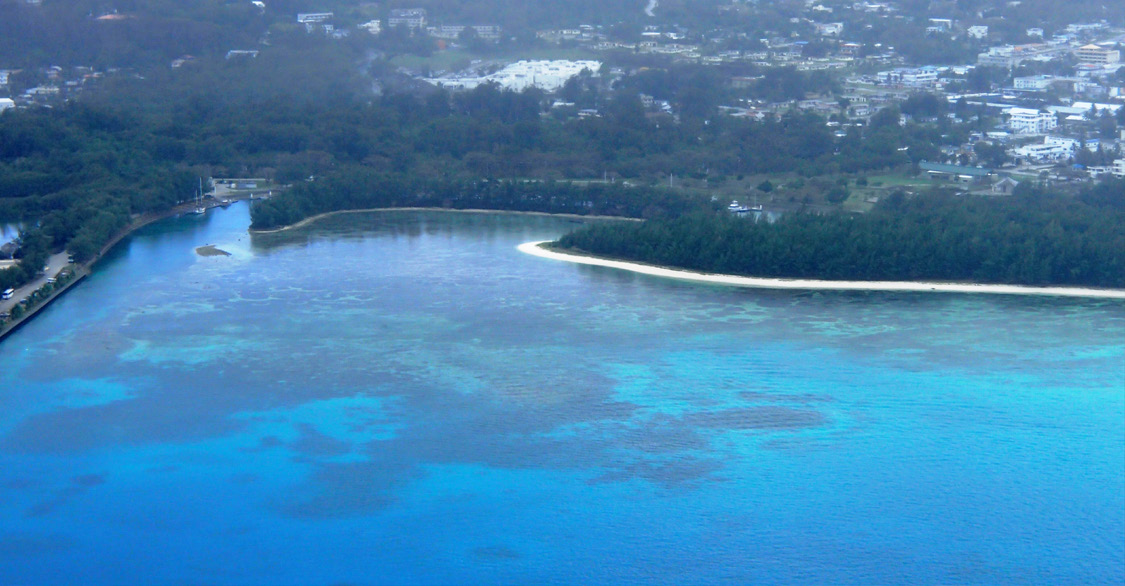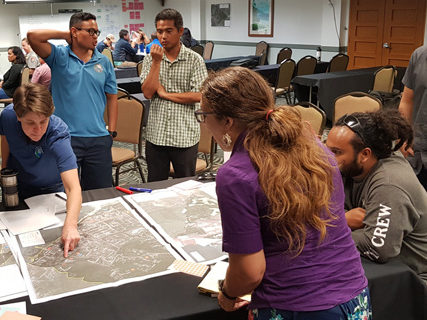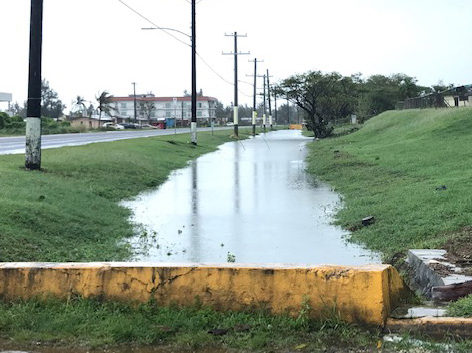Where We Work
The Commonwealth of the Northern Mariana Islands (CNMI) is comprised of 14 islands extending over 370 miles in the western Pacific. Coral reefs are an important part of CNMI’s cultural heritage; unfortunately, a growing population and increased development have exacerbated threats to coral reef ecosystems, leading to reduced coral health. These effects are most noticeable on the island of Saipan, where approximately 90 percent of CNMI’s population resides.
Our Approach
Partnership efforts focus on providing technical support and capacity building for local staff to conduct watershed planning and prioritization of coral reef management efforts; secure sustainable financing for marine protected areas (MPAs); increase effectiveness of monitoring efforts; engage youth in conservation; and support local NGO advisory group development. To amplify conservation momentum in the region and foster shared learning, the partnership also supports regional learning exchanges and activities conducted within the framework of the Micronesia Challenge, a commitment to conserve at least 30 percent of nearshore marine resources and 20 percent of terrestrial resources by 2020.

Our Accomplishments
Our Accomplishments Partnership efforts have directly benefited approximately 70 square miles of coral reef habitat, provided 5 sites with technical support and resulted in the training of 123 people.
- Completed and formally adopted two Conservation Action Plans (CAPs). A collaborative, science-based approach was used to identify and preserve priority coral resources and measure these efforts at two sites (Talakaya Watershed and Garapan). Plan implementation has begun at both sites.
- Supported the exploration of a sustainable financing mechanism to support conservation as part of the broader Micronesia Challenge for a regional endowment. The endowment will provide a sustainable financing source that supports the preservation of the marine resources that are crucial to the survival of Pacific traditions, cultures and livelihoods.
- Completed an inventory and review of social science work conducted in CNMI to inform the development of socioeconomic monitoring protocols and a plan which allows for a unified approach to socio-economic monitoring across CNMI.
- Supported enhanced capacity of non-governmental organizations (NGOs) by providing five years of technical assistance through board training, strategic planning and the development of fundraising plans for local NGOs.
- Completed a threat assessment for the Managaha Marine Conservation Area to determine priorities for conservation efforts.
- Completed a social marketing campaign to reduce poaching in the Managaha Marine Conservation Area. The campaign increased knowledge sharing among community members about the historical, cultural and economic significance of the area to increase community support for fishing regulations.
- Facilitated the development of strategic coral reef management priorities with coral reef management agencies. Potential funders were encouraged to invest in activities outlined in the CNMI 2019-2029 Coral Reef Management Priorities and expand partnerships to build common coral reef conservation goals.
- Developed the Garapan Integrated Watershed Management Plan (GWMP) which will help guide CNMI’s efforts to maintain or improve the Garapan Watershed over the next five years.
- Migrated twenty-plus years of historical coral reef monitoring data into the Micronesia Challenge Regional Database, an online platform that provides safe, secure, and standardized data to partners and facilities our shared data analysis pipelines across the region.


SUCCESS STORY: Management Plan will help guide CNMI’s efforts in Garapan Watershed
The Garapan watershed is a sub-watershed of the West Takpochao watershed on Saipan. The coastal waters off Garapan provide critical mangrove, seagrass, and reef habitat for important marine species, and also provide critical protections for Saipan’s socio-economic hub, by buffering storm surges and extreme rain events. Due to projected increases in these events due to climate change, protecting and maintaining the Garapan watershed is a priority. In 2017, Commonwealth and federal stakeholders identified the need to transition all existing Conservation Action Plans to IWMPs. Thus, the Garapan Integrated Watershed Management Plan (GWMP) was developed in 2020. It’s primary objective is to consider key watershed benefits and identify ways to maintain or improve them over the next five years.
Building the Plan
Over 40 stakeholders from CNMI government agencies and NGO’s met to discuss and complete watershed management planning activities for the Garapan watershed and other priority areas. During this workshop, participants reviewed required components of watershed management plans to meet EPA standards, updated core components of the Garapan CAP, and updated modeling and monitoring results.
Additional input was provided after the workshop through the CNMI Watershed Working Group and meetings with key implementation partners in the plan. The Horsley Witten Group also conducted pollutant load modeling to identify key strategies to reduce pollutant loads. The resulting GWMP is a combination of both the workshop and model outputs.
Key Findings
The GWMP identifies the main impairments and sources of threat to the Garapan watershed as bacterial contamination from human and animal waste; non-bacterial polluted runoff from fats, oils, and grease (FOG); invasive species that threaten critical habitat due to inadequate permitting; native wildlife population decline; and illegal harvest. To address these impairments, the plan proposes to:
- Improve lagoon water quality, through improved management, infrastructure, and development planning.
- Improve management of Critical Habitat (i.e., wetlands, mangrove, seagrass, reef, forest) through invasive species prevention and management, and enforcement of existing regulations.
- Foster sustainable and resilient development through improved planning and permitting processes, inter-agency collaboration, and community involvement.
The GWMP will help guide CNMI’s efforts to maintain or improve the Garapan Watershed over the next five years. In doing so, the plan will also protect and preserve Garapan’s important role as home to CNMI’s only recreational and commercial marina and only hospital and the wide range of benefits it provides to the people of CNMI. The resulting IWMP is a combination of both the workshop and model outputs and an example of successful partnerships among multiple agencies and organizations. The IWMPs will now guide the work of at least nine different government agencies in CNMI.
